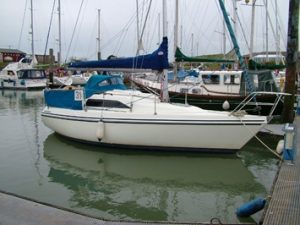During the High Middle Ages the emperors of Germany, who called themselves Holy Roman Emperor, were preoccupied with territorial and dynastic conflicts in Italy and the Mediterranean. The emperors had their sights focused on the south. Their vassals and burgers in the northern parts of Germany were, in consequence, able to live their lives relatively untroubled by the heavy hand of the imperial court. The local barons of the northern regions needed to borrow money from city merchants to pay for their quarrels with one another. The merchants, for their part, needed a degree of political order and armed support if their trade and manufactures were to prosper. A symbiotic political and commercial association between baron and burger, known as the Hanseatic League, emerged onto the stage of history in the twelfth century and flourished for some four hundred years.
The core of the Hanseatic League was formed by some 40 German-speaking cities, most of which were sea ports. By a succession of shifting alliances the cities co-operated well enough to maintain a profitable mercantile ascendency in the Baltic and the southern part of the North Sea. The capital of the Hanseatic League was the city of Lübeck situated in the southeast corner of the Baltic Sea.
Beyond the cities themselves the league maintained a system of permanent self-governing depots, or kontore. The easternmost was at Novgorod in Russia while the most western kontor was in London. The London depot was known in English as the Steelyard and its site is now buried beneath Cannon Street railway station. Cities as widely separated as King’s Lynn, Bergen, Scalloway, Turku in Finland and Naples in Italy possessed Hanseatic communities off-and-on during Medieval and Renaissance times.

I have been sailing for more than 50 years but I have never sailed into the Baltic Sea. My plan for 2016/17 is to explore the Baltic by investigating the core territory of the medieval Hanseatic League. My projected route is shown on the map.
The Hanseatic cities were the heirs of the seagoing traditions of the Vikings. The widely scattered locations of the activities of the league were connected by sea. The characteristic ship of the league, the cog, was a development of the Viking cargo vessel, the knarr. The cog was the first Western ship design that used a rudder rather than a steering oar. The cog was no sort of warship, but it could carry much more cargo than a Viking merchantman and it was better adapted to trade and the duties of peace and commerce.
My small yacht Zephyrus is suitable neither for war nor trade. She is a small racing boat built 30 years ago to the International Offshore Rating, or IOR, rule. I have converted her for cruising rather than for racing.

My previous yacht, Harrier of Down, which was very similar to Zephyrus was lost in a towing accident in the North Sea in October 2015. Aboard Harrier I had circumnavigated the world.
I propose to consult the historical museums of all the cities that I visit. If I am lucky I shall uncover enough historical and maritime material to form the basis of a book that combines an account of a modern yacht cruise with an insight into medieval maritime and commercial life.